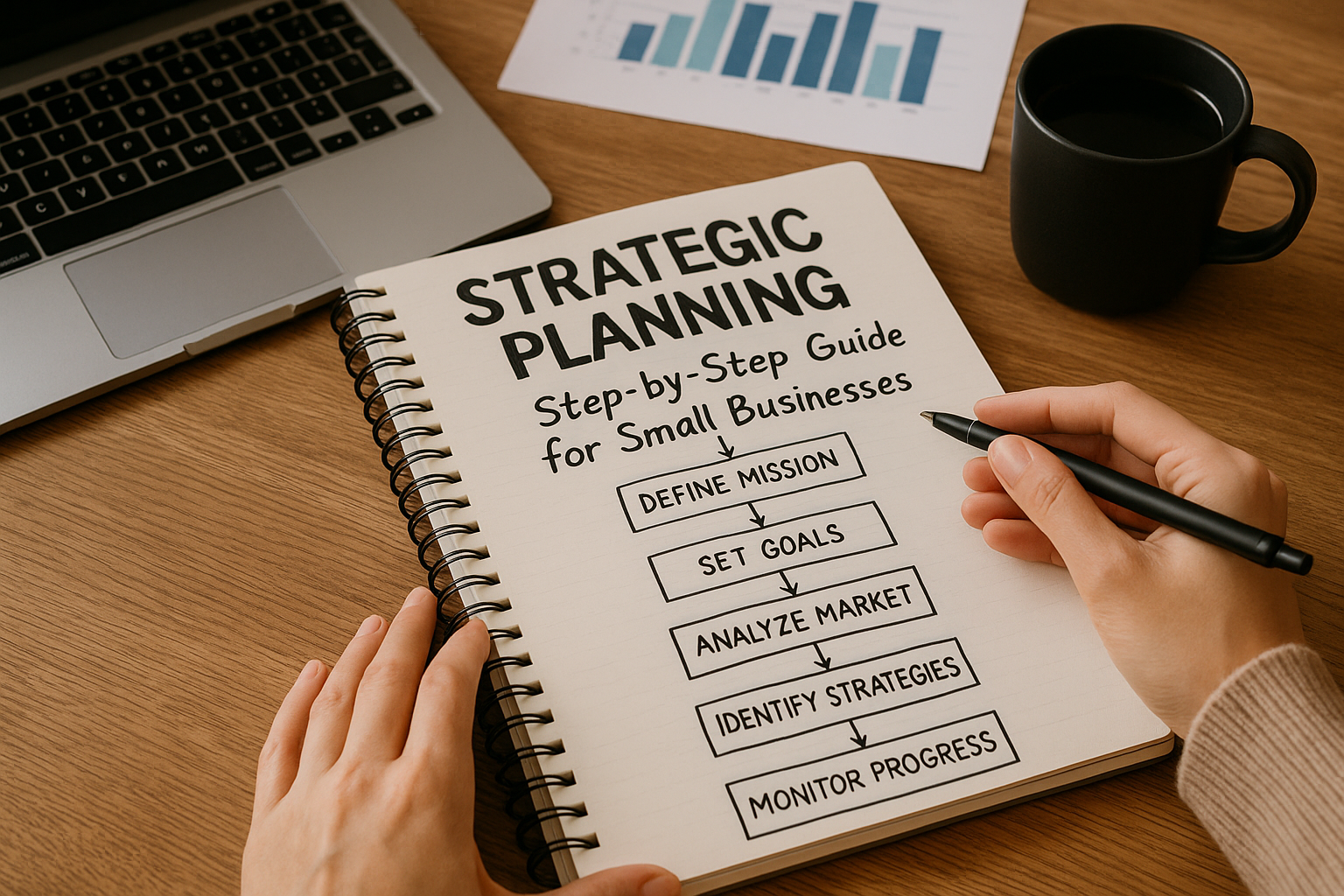Every successful business — no matter its size — starts with a clear strategy. Strategic planning helps small entrepreneurs make better decisions, allocate resources efficiently, and stay focused on long-term goals. Without it, you may find yourself working hard but getting nowhere. In this guide, we’ll walk you through the essential steps of strategic planning for small businesses, using practical language and real-world examples.
What Is Strategic Planning and Why It Matters
Strategic planning is the process of setting goals, determining actions to achieve those goals, and mobilizing resources to execute the actions. It’s like creating a GPS route for your business journey — without it, you might move, but you won’t know where you’re going.
Why it’s important:
- Brings clarity to your vision and mission
- Helps you make better business decisions
- Aligns your day-to-day activities with long-term goals
- Prepares you for market changes and challenges
Even solo entrepreneurs or small teams benefit from strategic planning.
Step 1: Define Your Mission and Vision
Your mission is the reason your business exists. Your vision is where you want your business to be in the future.
Examples:
- Mission: “To help local artists sell their work online and gain recognition.”
- Vision: “To become the leading platform for independent art sales in South America.”
When you clearly define these, it becomes easier to communicate your purpose and stay aligned with your goals.
Step 2: Set SMART Goals
SMART goals are:
- Specific
- Measurable
- Achievable
- Relevant
- Time-bound
Instead of vague goals like “get more customers,” a SMART version would be:
“Gain 50 new customers in 3 months through Instagram and Facebook ads.”
SMART goals make your plan actionable and trackable.
Step 3: Analyze Your Market (SWOT Analysis)
Before building a strategy, you need to understand your environment. A SWOT analysis is a simple yet powerful tool.
- S – Strengths: What do you do well?
- W – Weaknesses: What needs improvement?
- O – Opportunities: What trends or gaps can you take advantage of?
- T – Threats: What challenges or competition could slow you down?
This step helps you create a plan based on reality, not assumptions.
Step 4: Identify Your Target Audience
You can’t please everyone — and you shouldn’t try. Your strategy must focus on the right audience.
Ask yourself:
- Who needs what I offer?
- What are their habits, problems, and desires?
- Where do they spend time online?
Create a buyer persona with name, age, occupation, interests, and buying behavior. This will guide your marketing and product development.
Step 5: Define Your Unique Selling Proposition (USP)
What makes your business stand out? Why should customers choose you over the competition?
Examples of USPs:
- “Fastest delivery in the city.”
- “Handmade, eco-friendly packaging.”
- “Exclusive coaching for moms returning to the workforce.”
Your USP should be clear in all communication — from your website to your social media.
Step 6: Choose Your Key Strategies
Now that you know your goals, audience, and USP, define the core strategies that will move your business forward.
These might include:
- Content marketing (blog posts, videos)
- Social media campaigns
- Referral programs
- Email newsletters
- In-person events or pop-ups
Be realistic — choose only the strategies you can consistently maintain with your current resources.
Step 7: Create an Action Plan
Strategies are only ideas until you act on them. Break each strategy down into actionable steps with deadlines and responsibilities.
Example:
Strategy: Grow Instagram audience
Actions:
- Post 4 times per week
- Use relevant hashtags
- Engage with 10 accounts per day
- Run a monthly giveaway
Track your progress weekly or bi-weekly and adjust based on results.
Step 8: Set a Budget and Allocate Resources
Every plan needs funding and time to be executed. Define:
- How much money you can spend (ads, tools, materials)
- How many hours per week you can dedicate
- Who is responsible for what (even if it’s just you!)
Start lean. You can always expand your efforts as your business grows.
Step 9: Monitor and Adjust Your Plan
The market changes. Customers change. Technology changes. Your strategic plan must be flexible enough to evolve.
Review your progress every month or quarter:
- Are your goals being met?
- What’s working, and what’s not?
- Do you need to revise your timeline or strategies?
Make changes without abandoning your core vision.
Step 10: Keep Your Team Involved (If You Have One)
If you’re not working alone, make sure your team understands the plan and feels included in the process. A united team will execute the strategy more effectively and with more motivation.
Tips:
- Hold brief weekly check-ins
- Share wins and celebrate small victories
- Encourage feedback and ideas
Even with a small team, communication and alignment are key.
Long-Term Success Starts with Strategic Thinking
You don’t need a corporate background to create a strategy — just a clear vision and commitment to follow through. Strategic planning helps you work smarter, not harder. It brings structure, accountability, and direction to your business efforts.
Instead of constantly reacting to problems, you’ll start anticipating them. Instead of guessing what to do next, you’ll follow a clear plan that’s aligned with your values and your customer needs.
Whether you’re just starting or looking to grow, a solid strategy is your strongest foundation.
